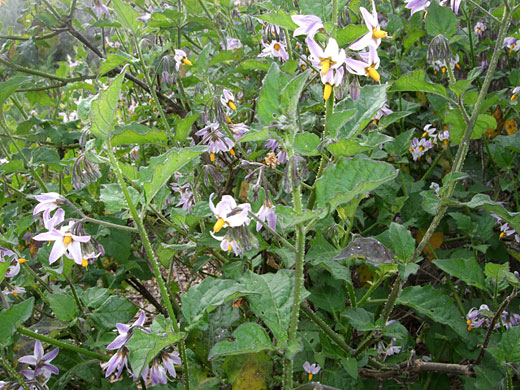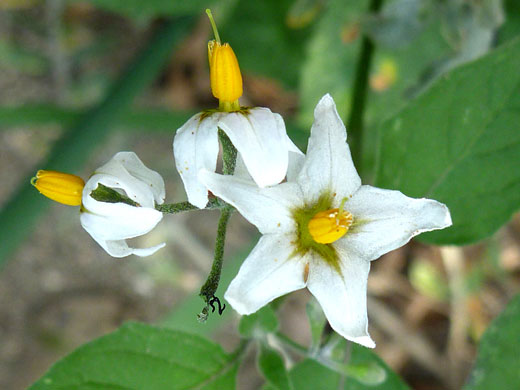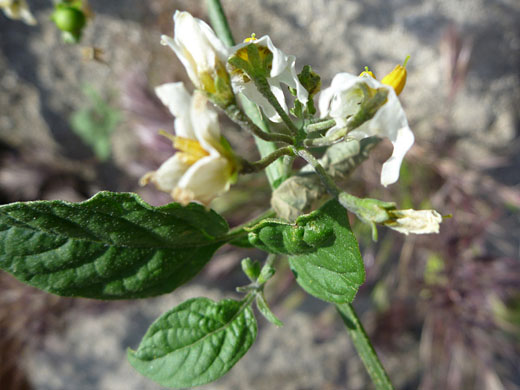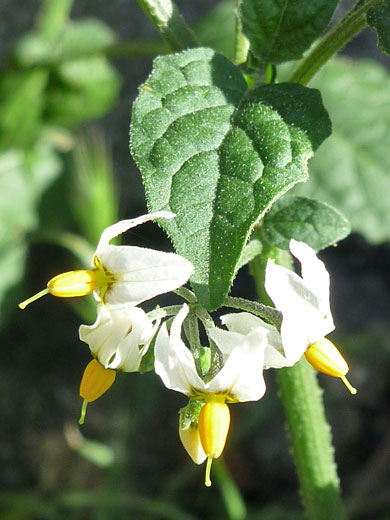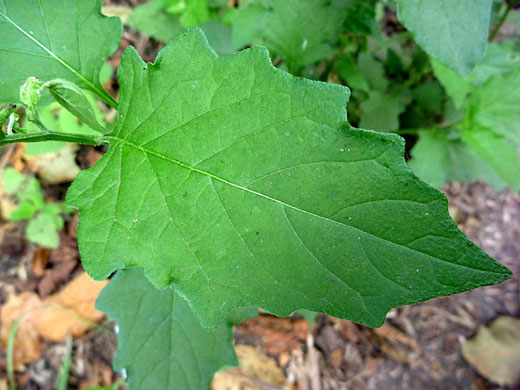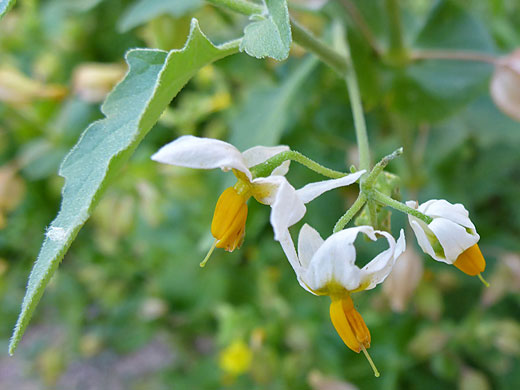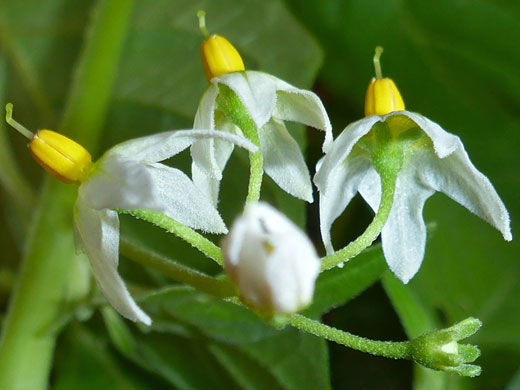Common names:
Greenspot nightshade, Douglas' nightshade
Family:
Scientific name:
Solanum douglasii
Main flower color:
Range:
South California, Arizona, south New Mexico and scattered areas of Texas
Height:
Up to 6 feet
Habitat:
Shady hillsides, canyons, coastal scrubland
Leaves:
Ovate, up to 3.5 inches long, usually with fine, irregular teeth along the margins, and a light covering of white hairs
Season:
February to October
The common name of solanum douglasii (greenspot nightshade) refers to the green spots at the base of the five corolla lobes, which are pure white to light purple in color, pointed, and bent far back when fully mature to explore a fused cylinder of yellow stigmas, with a style protruding out of the center. The corolla lobes are longer than the corolla tube.
Like most members of this genus, the leaves are poisonous, but the small, spherical, tomato-like fruits are edible. Fruits are initially green, becoming black as they mature. Stems branch freely, producing clumps up to six feet high and wide; they, and the leaves, have a covering of short, white hairs, which may be single or branched, but not star-like. Flowers are produced as small, umbel-like clusters, with a single rather than divided axis.
Like most members of this genus, the leaves are poisonous, but the small, spherical, tomato-like fruits are edible. Fruits are initially green, becoming black as they mature. Stems branch freely, producing clumps up to six feet high and wide; they, and the leaves, have a covering of short, white hairs, which may be single or branched, but not star-like. Flowers are produced as small, umbel-like clusters, with a single rather than divided axis.
All Contents © Copyright The American Southwest | Comments and Questions | Contribute | Site Map


